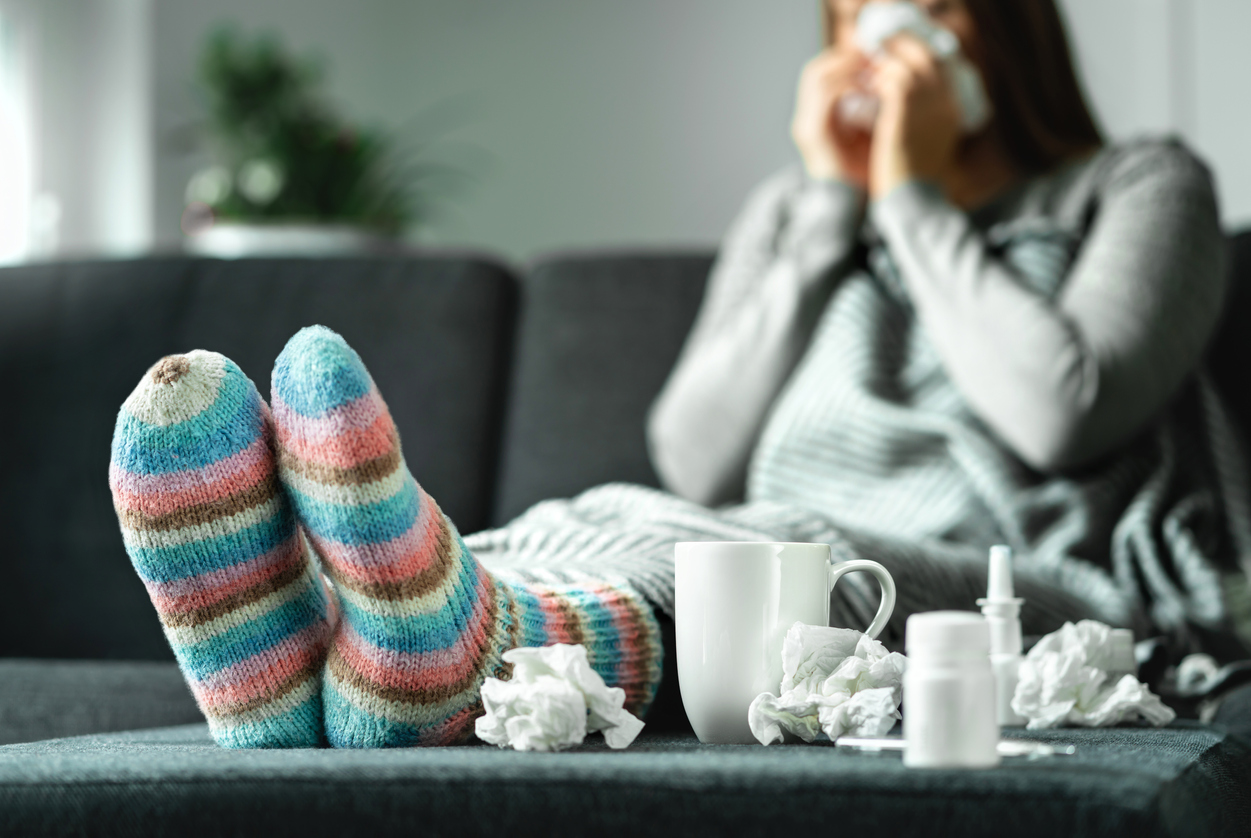Cold and Flu Season 2022-2023
While this time of year is filled with excitement from going back to school, getting back into sports and enjoying the cooler weather, unfortunately fall is also when cases of the cold and flu begin to pick up. Natasha Bhuyan, MD, an infectious disease specialist and family physician, states that cold and flu cases typically peak in December through February, and can last until May. After two full years of the COVID-19 pandemic, cold and flu season has a bit more anxiety surrounding it. That is why we want to discuss the differences between the cold, the flu and COVID-19 and ways you can help prevent all three this year.
Recognizing the Symptoms
The common cold is a viral upper respiratory tract infection of your nose and throat. Symptoms appear gradually and may include: runny or stuffy nose, sore throat, cough, congestion, slight body aches or a mild headache, sneezing and sometimes a low-grade fever.
The flu, or influenza, is a viral infection that attacks your respiratory system including your nose, throat and lungs. Influenza symptoms appear abruptly and include: fever, body chills, muscle aches, sore throat, runny or stuffy nose, chest discomfort, cough, headaches and fatigue.
People with COVID-19 have had a wide range of symptoms ranging from mild symptoms to severe illness. Common reported symptoms include: fever, chills, cough, sore throat, shortness of breath, congestion or runny nose, fatigue, body and muscle aches, back pain, headaches, loss of taste or smell, nausea or vomiting and diarrhea. Since many of these symptoms overlap with the cold and flu, it is recommended to have a few at home COVID-19 test kits on hand.
Precautions to Take
Listed below are steps to take this season to not only help defend you and your family from the cold and flu, but also from COVID-19:
- Wash your hands frequently with soap for at least 20 seconds. If soap and water are not available, use an alcohol-based scrub or hand sanitizer.
- Avoid close contact with people who are sick and when you are sick, keep your distance from others to protect them from getting sick.
- Be sure to stay home when you are sick. If possible, also avoid running errands when you are sick to prevent spreading your illness to others.
- Cover your mouth and nose with a tissue when coughing or sneezing. The flu and other serious respiratory illnesses, like COVID-19, are spread by coughing, sneezing, or unclean hands.
- Avoid touching your eyes, nose or mouth. Germs are often spread when a person touches something that is contaminated with germs and then touches his or her eyes, nose, or mouth.
- Clean and disinfect frequently touched surfaces at home, work or school, especially when someone is ill.
- Get yourself on a sleep schedule and aim for quality sleep of at least 7-8 hours to allow your body to rest and recuperate.
- Stay as physically active as possible. Get up, stretch and walk around often during work hours. You can also consider joining virtual workout classes through YouTube, Peloton, etc.
- Eat a healthy, nutritious diet full of whole foods and lean proteins, and limit your intake of sugar.
- Stay hydrated and find healthy ways to manage your stress. Both dehydration and chronic stress can decrease your immune system’s ability to fight viruses.



